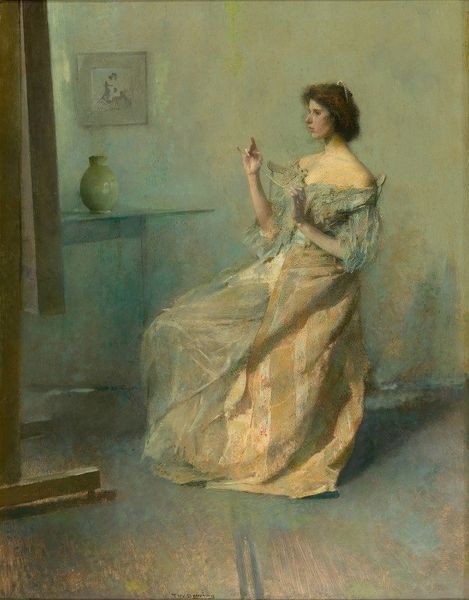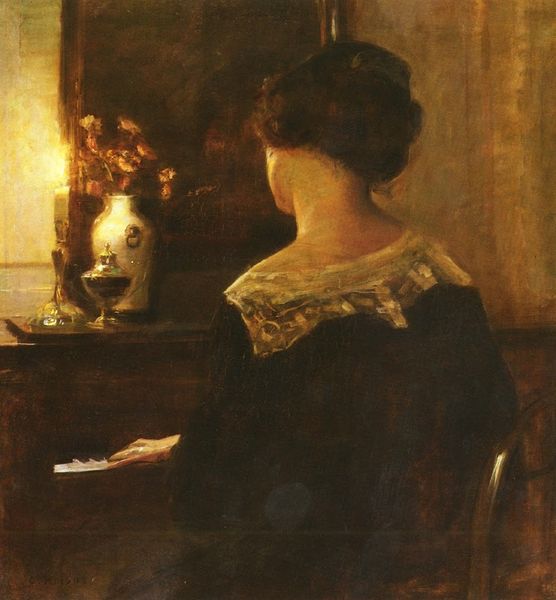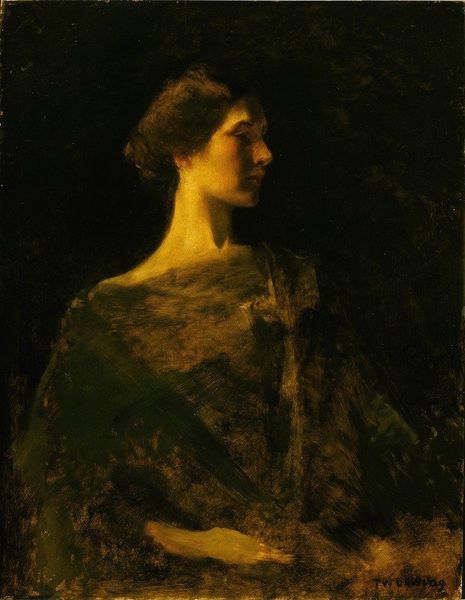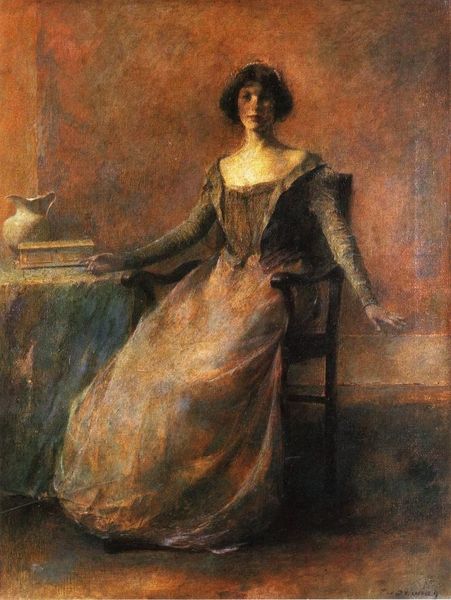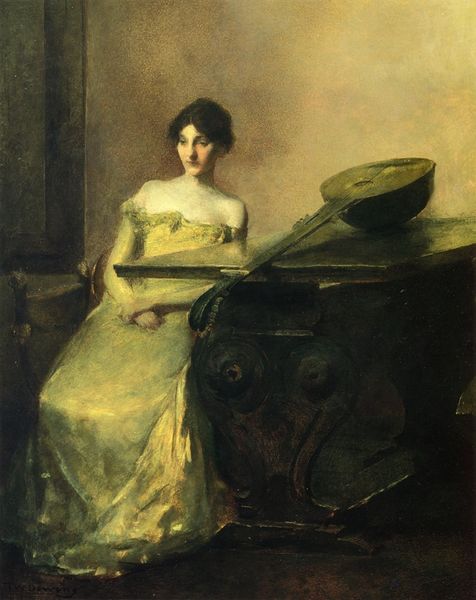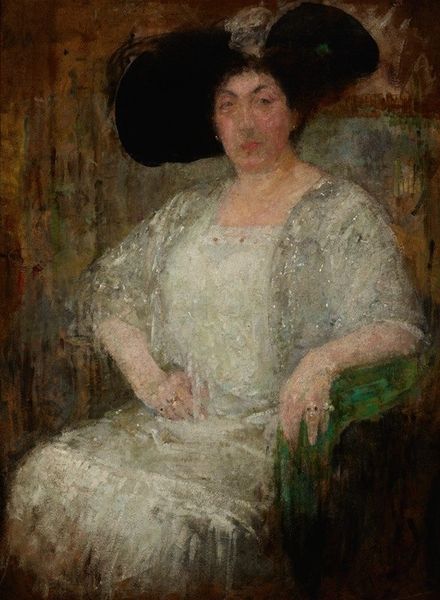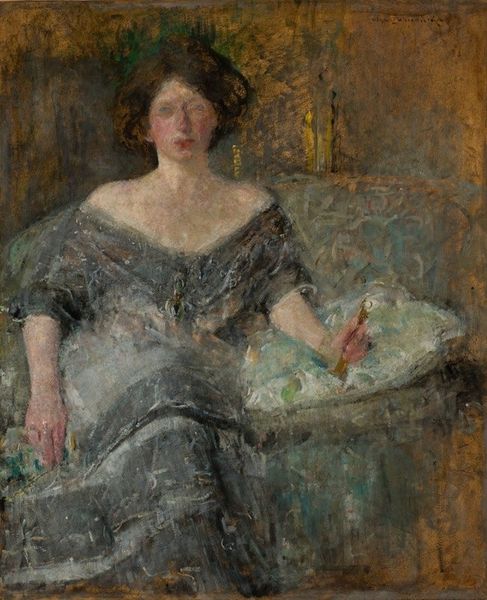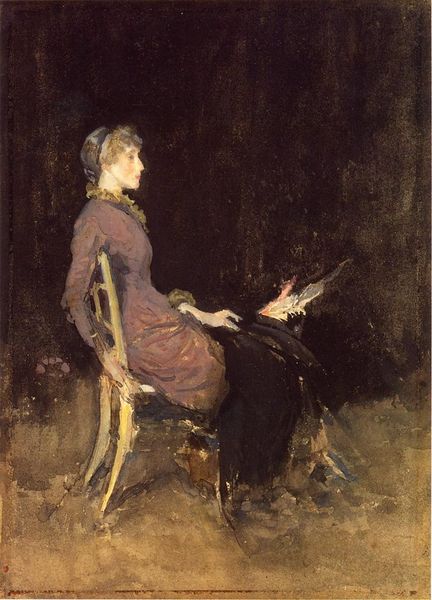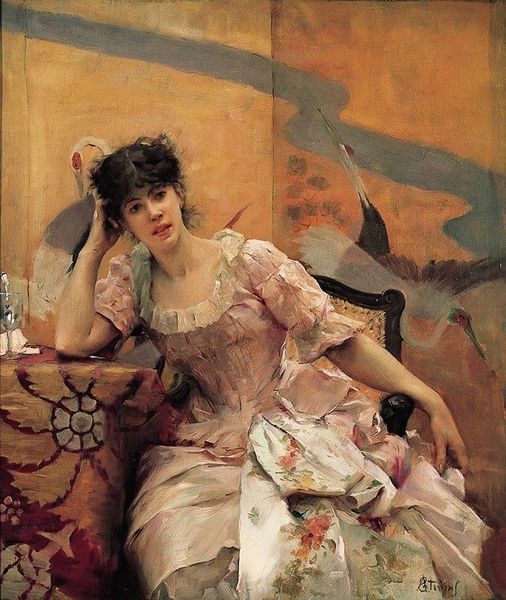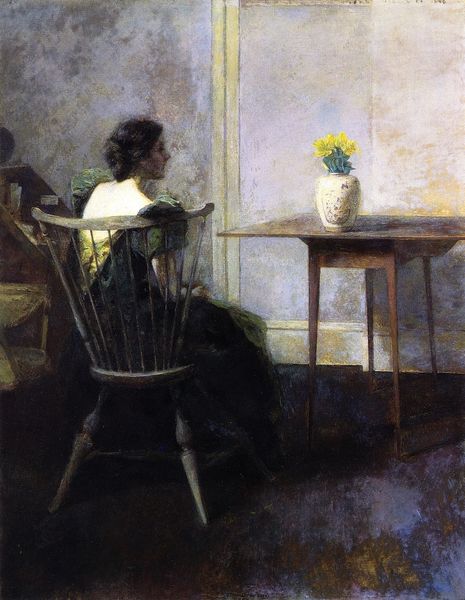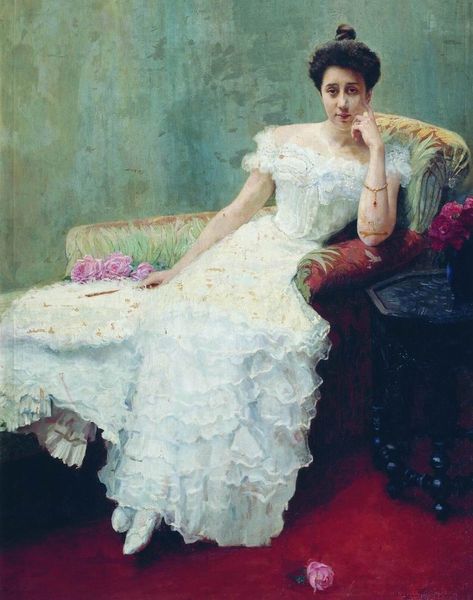
Copyright: Public domain
Curator: This is Thomas Wilmer Dewing's "Portrait of a Lady Holding a Rose," painted in 1912 using oil paint. It is evocative and contemplative, isn't it? Editor: Indeed, there’s a stillness, a quiet thoughtfulness that pervades the canvas. The composition draws the eye, with its muted tones and the delicate figure bathed in a gentle light. Curator: Dewing’s process really shines here. Notice the visible brushstrokes and the blending of colors; they aren’t perfectly smooth, there's texture here, evidence of the hand that shaped the paint and manipulated the material, this tells the tale of how labor went into the artmaking process. Editor: Yes, the rose seems to be the focal point—roses traditionally symbolizing love, secrecy, and beauty. Given her reserved demeanor and sidelong gaze, I wonder what unspoken narratives or desires the artist might be hinting at? And the scroll in the back… Curator: From my perspective, focusing solely on the woman obscures other compelling features: consider the luxurious fur stole around her neck and her elegant green dress. These were likely crafted by skilled artisans and were tangible indicators of the sitter's wealth and the socioeconomic context of its production. These materials denote the process through which value is produced in the cultural ecosystem. Editor: Ah, but the way she holds the rose, almost protectively. Roses in portraits also carry all sorts of meanings connected to classical themes. We also get that classical theme coming in through the pose: all pointing towards that historical baggage. I would suggest it could speak about her relationship with conventional notions of beauty during that time. Curator: Convention or class. That garment would require specialized tailoring and material sourcing! Also the way Dewing uses paint to mimic the drape and fall of the fabrics tells us much about the culture of clothing production. Even that decorative art behind her; imported, hand-painted I suspect. Editor: Perhaps, yet even beyond class and beauty we can reflect upon more universal concepts regarding that relationship she has with that small, delicate rose, for it also signifies both life and its ephemeral, temporary qualities... almost a melancholic meditation upon life and loss. Curator: Ultimately it is that combination of materials, social class, and access, all of which intersect in this image that speaks most forcefully to me. I hadn't truly considered how the value of the objects contributes to a visual, legible meaning for a portrait of the period. Editor: Absolutely. Reflecting on it, considering these two distinct vantage points is what breathes more life into it than Dewing probably envisioned when composing that original symbol of the woman with the rose.
Comments
No comments
Be the first to comment and join the conversation on the ultimate creative platform.

